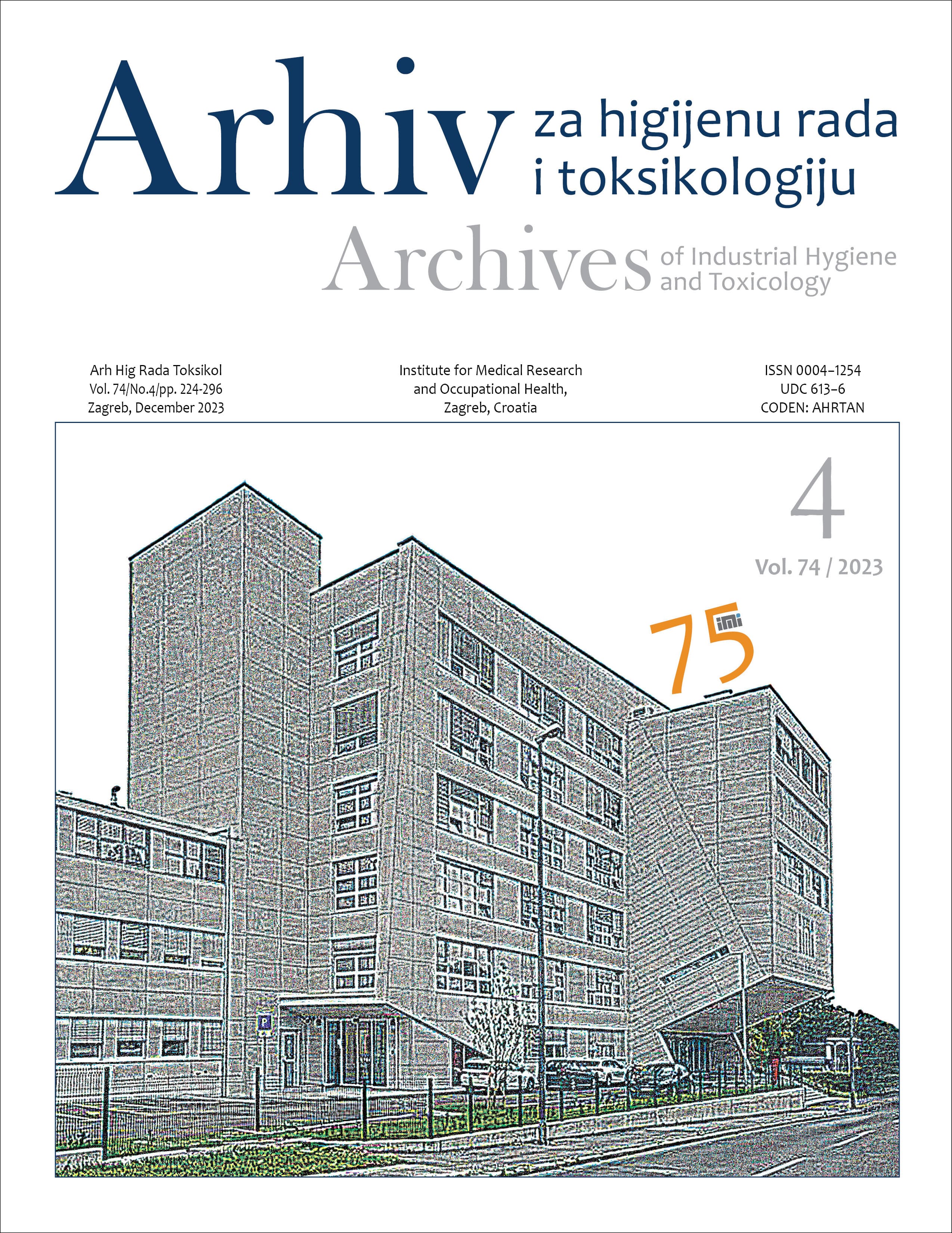Salivary cortisone as potential predictor of occupational exposure to noise and related stress
DOI:
https://doi.org/10.2478/aiht-2023-74-3785Keywords:
cortisol, HPLC, psychosocial risks, hearing lossAbstract
Salivary cortisone strongly correlates with serum cortisol, and since it is less invasive to measure salivary cortisone than serum cortisol and easier than to measure cortisol in saliva, as its concentrations are much lower, we wanted to compare salivary cortisone and cortisol levels as markers of noise-induced stress reaction. The study included 104 participants aged 19–30 years, 50 of whom were exposed to occupational noise ≥85 dB(A) and 54 non-exposed, control students. All participants took samples of their saliva with Salivette® Cortisol synthetic swabs on three consecutive working days first thing in the morning. Salivary cortisone and cortisol levels were determined with high-performance liquid chromatography. In addition, they completed a 10-item Perceived Stress Scale (PSS-10) questionnaire, and occupationally noise-exposed participants also completed the Health and Safety Executive (HSE) questionnaire on occupational psychosocial risks. The exposed participants had significantly higher cortisone (P<0.001) and cortisol (P<0.001) levels than controls, and the correlation between cortisone and cortisol levels in the exposed participants was strong (ρ=0.692, P<0.001), which suggests that salivary cortisone can replace cortisol measurements in saliva as a more reliable method than salivary cortisol and less invasive than serum cortisol. However, the level of perceived stress scored on PSS-10 in the exposed participants did not differ significantly from stress reported by controls, but correlated negatively with cortisone levels, which is contrary to our expectations and raises questions as to why.












